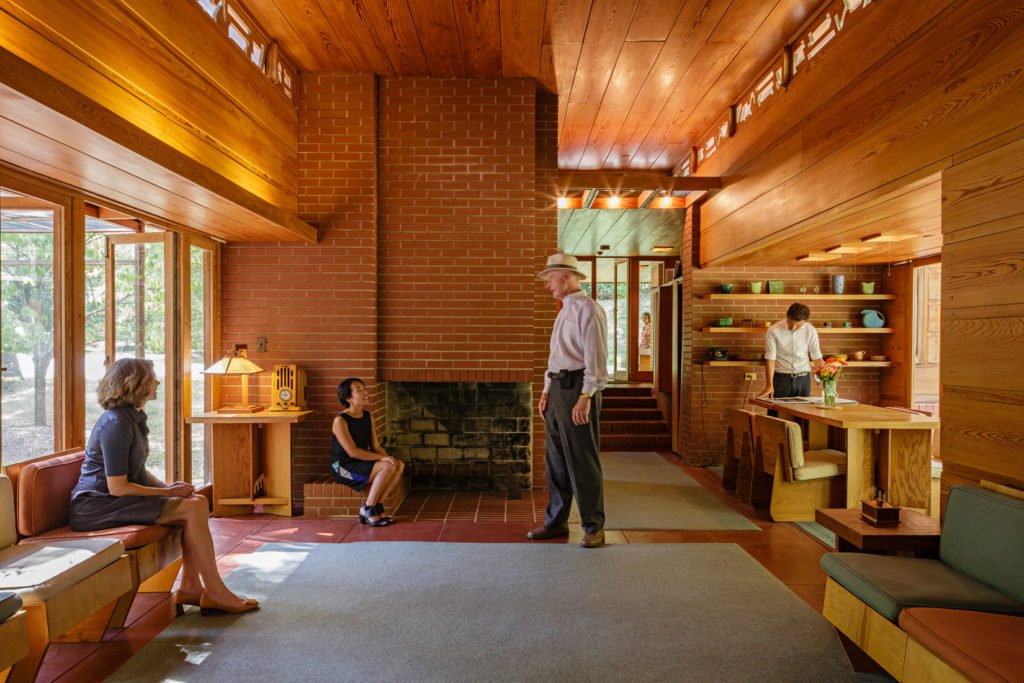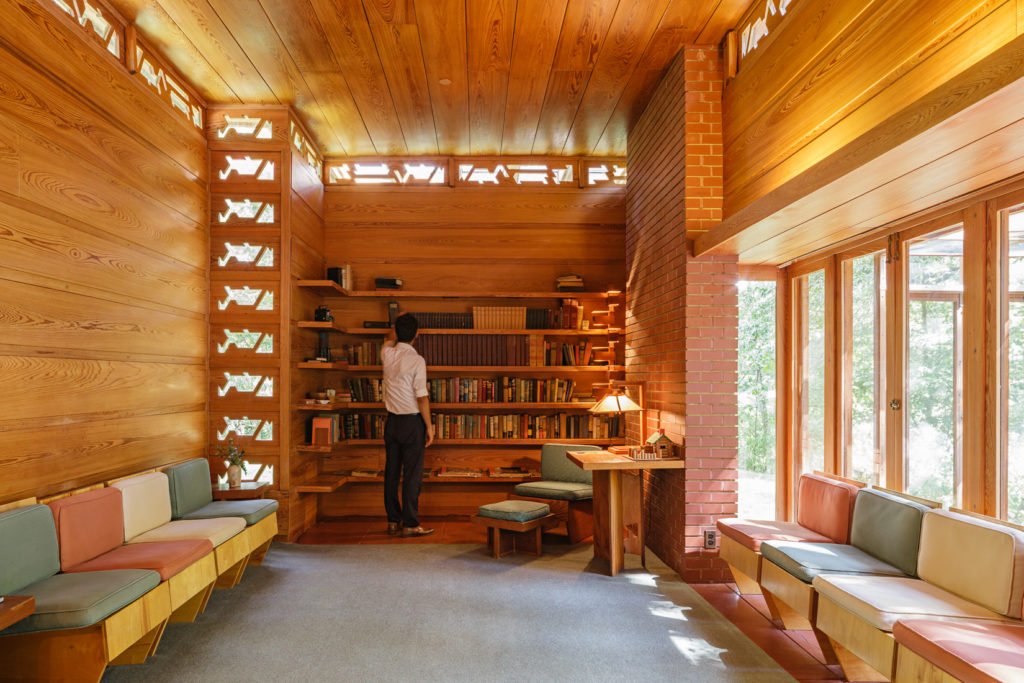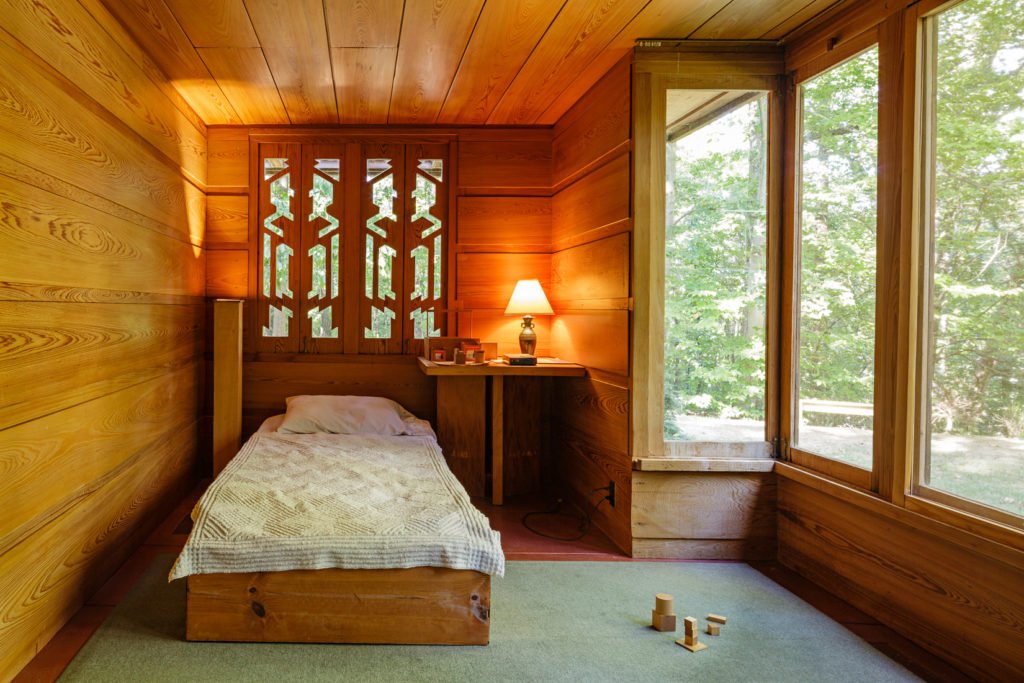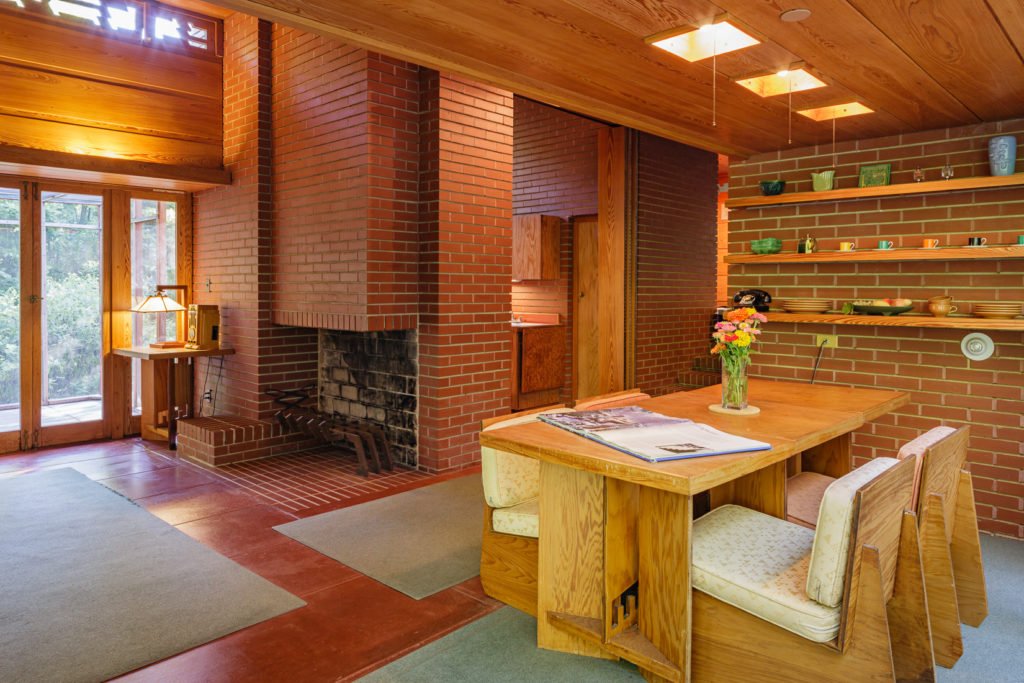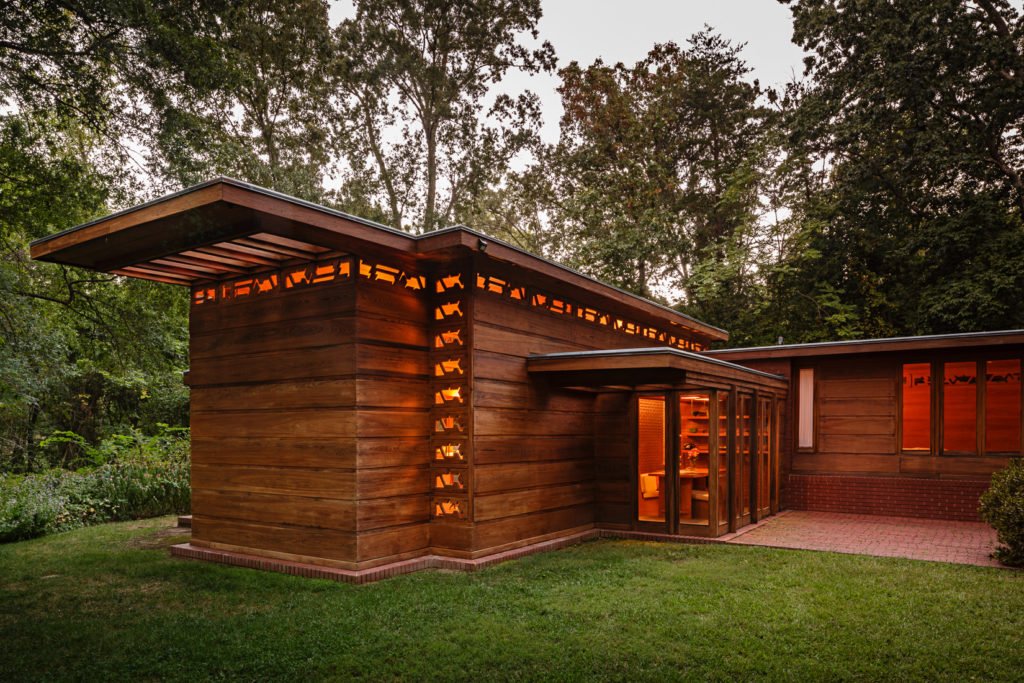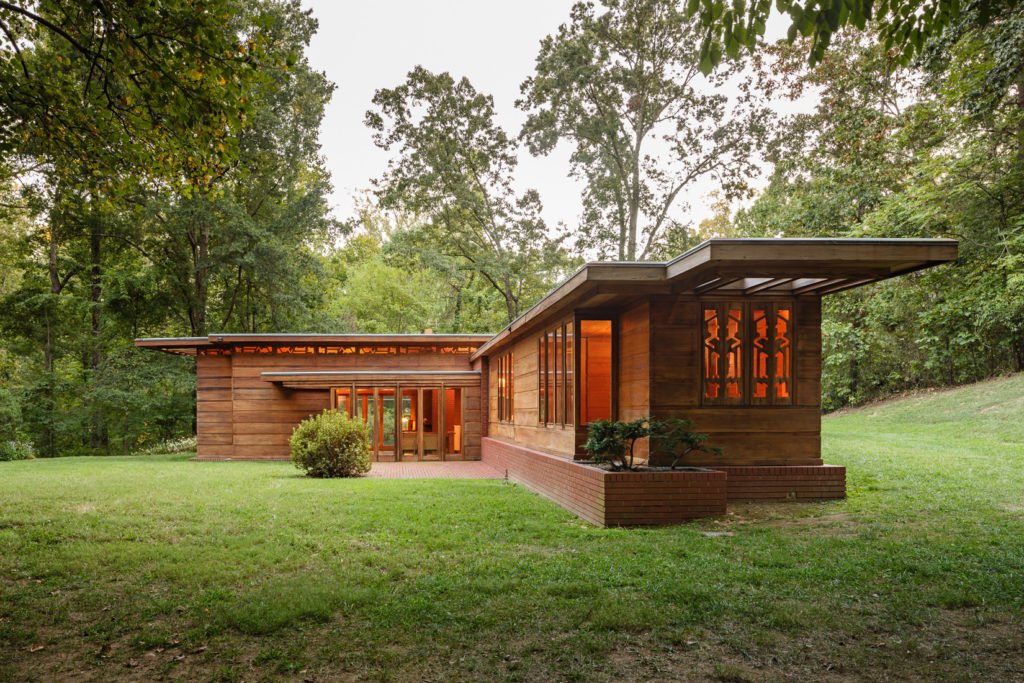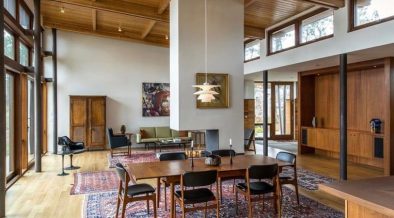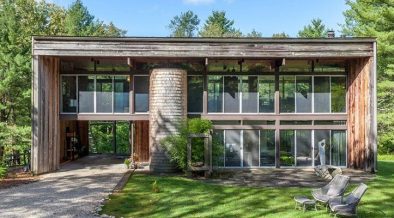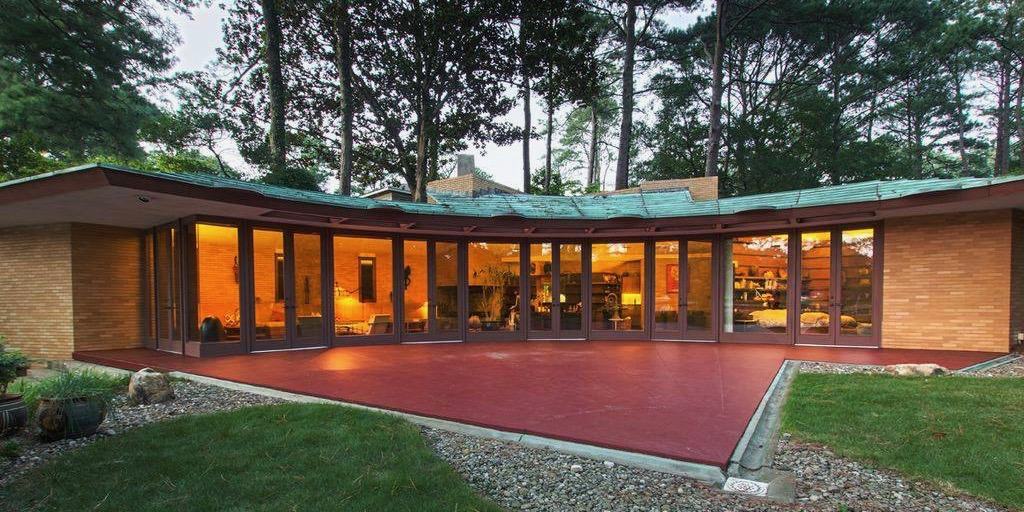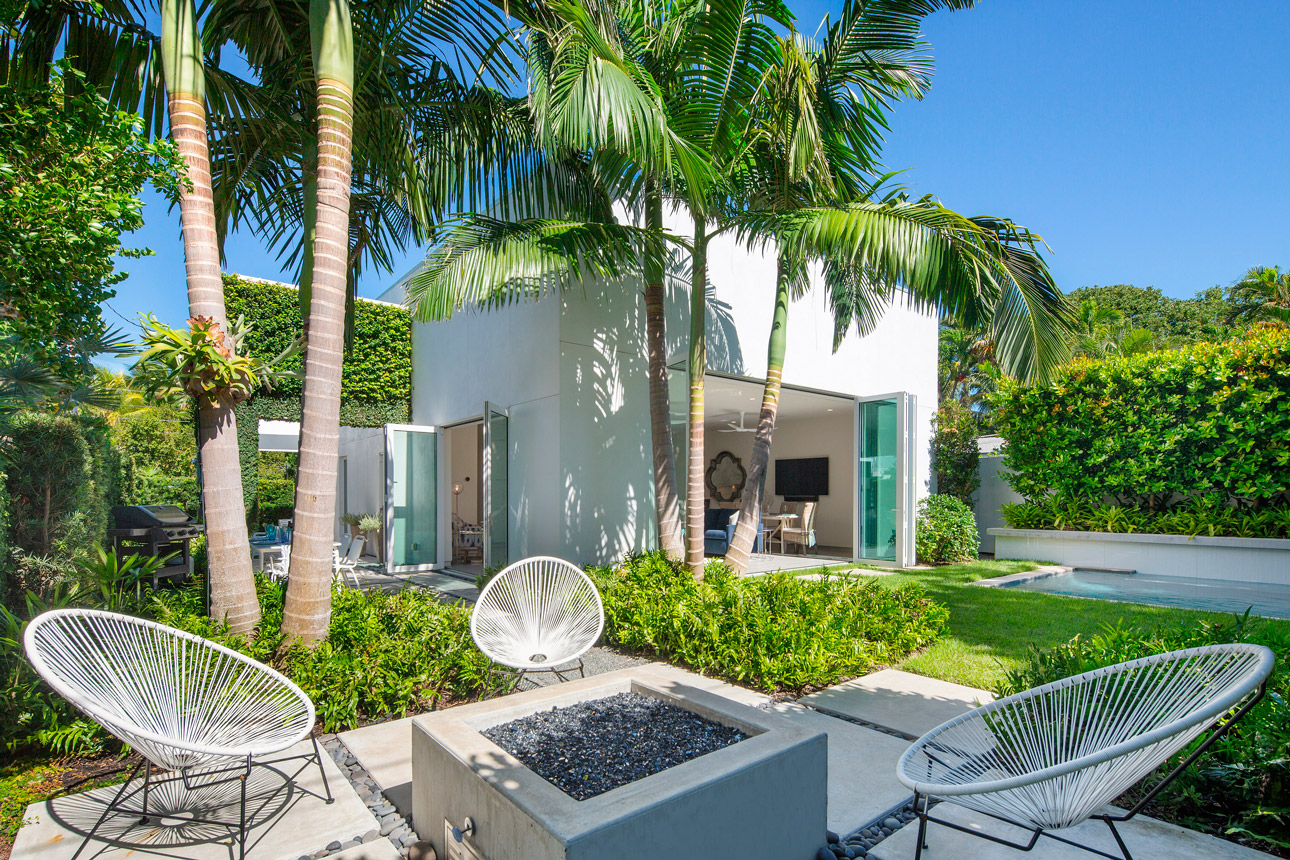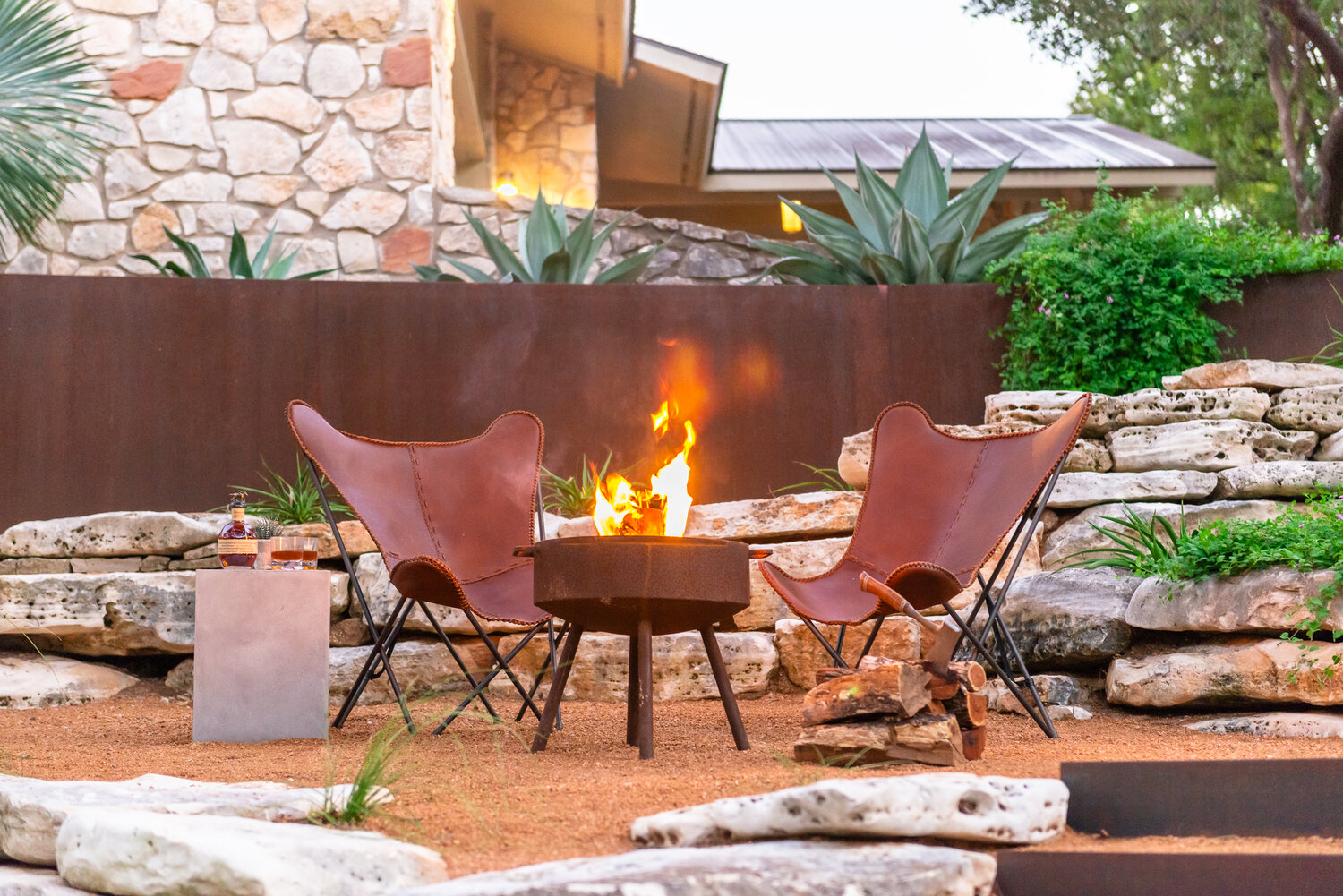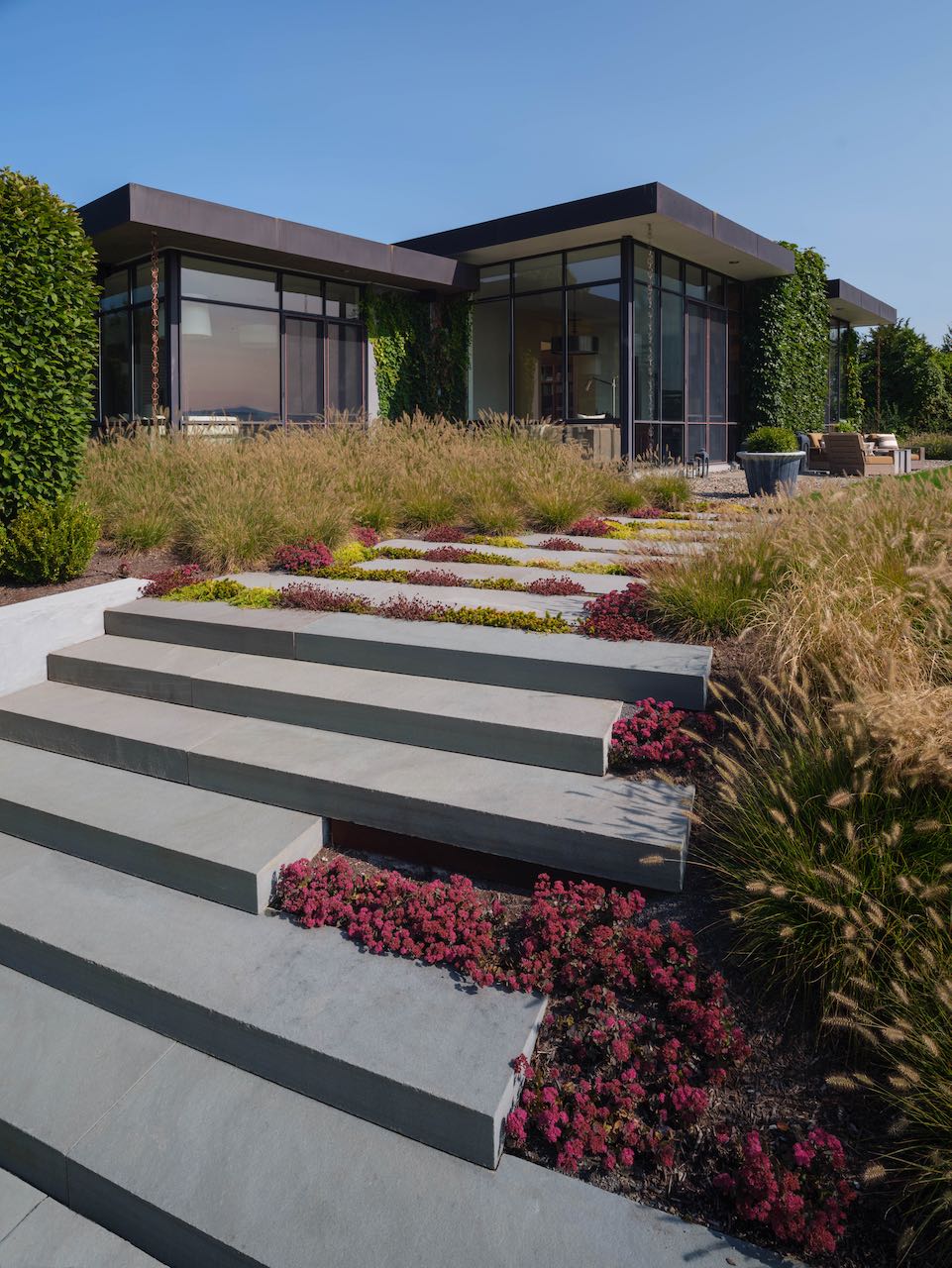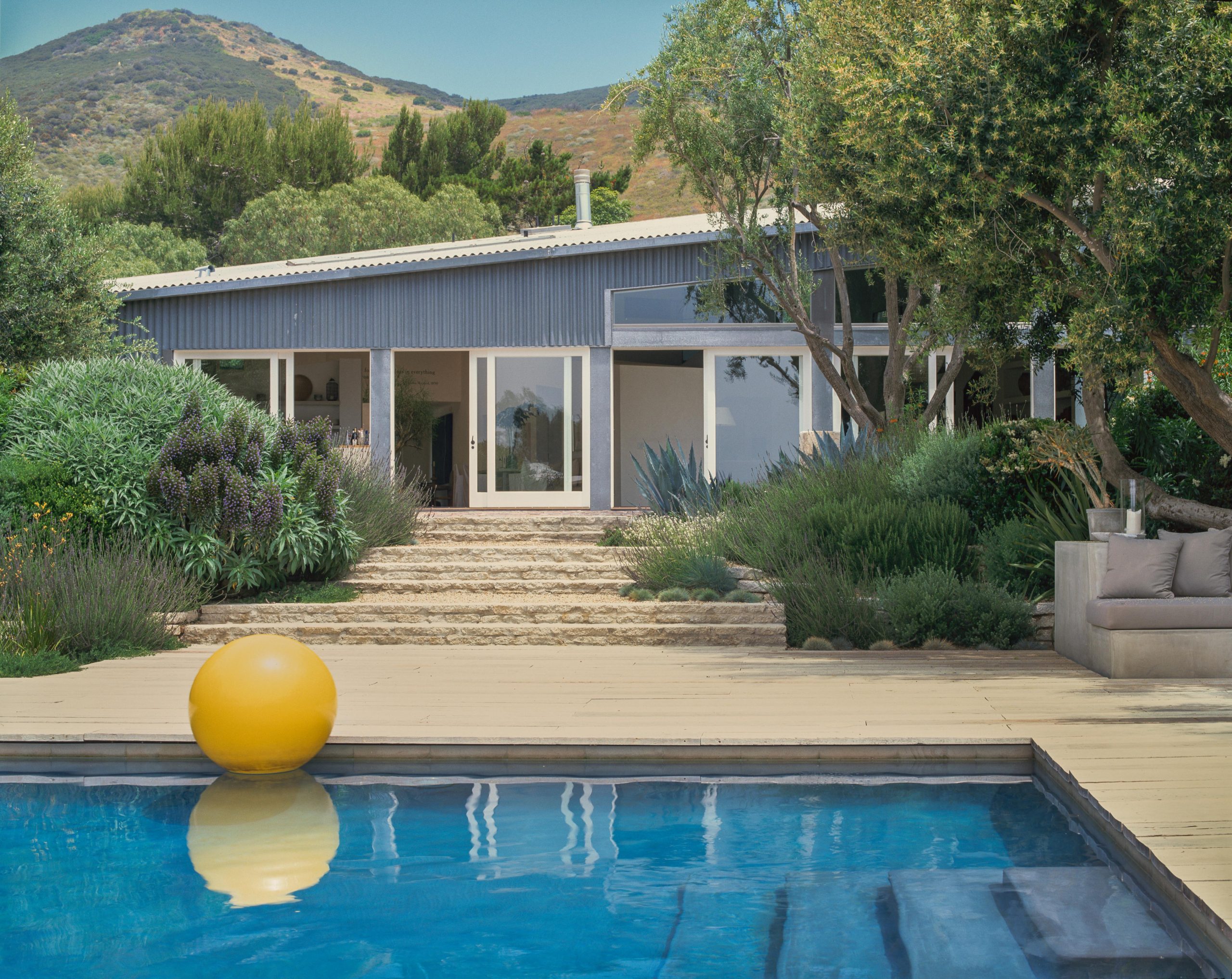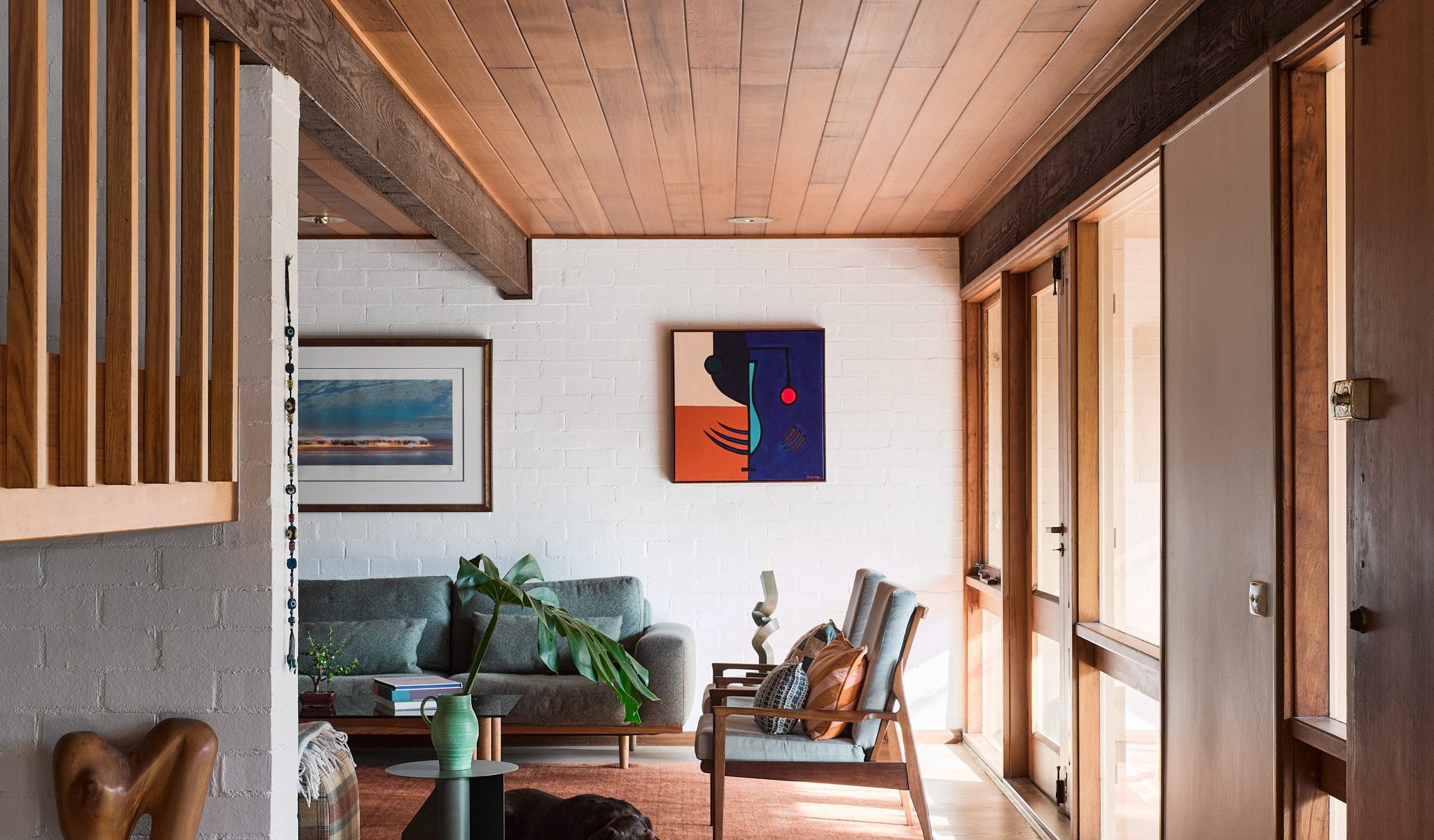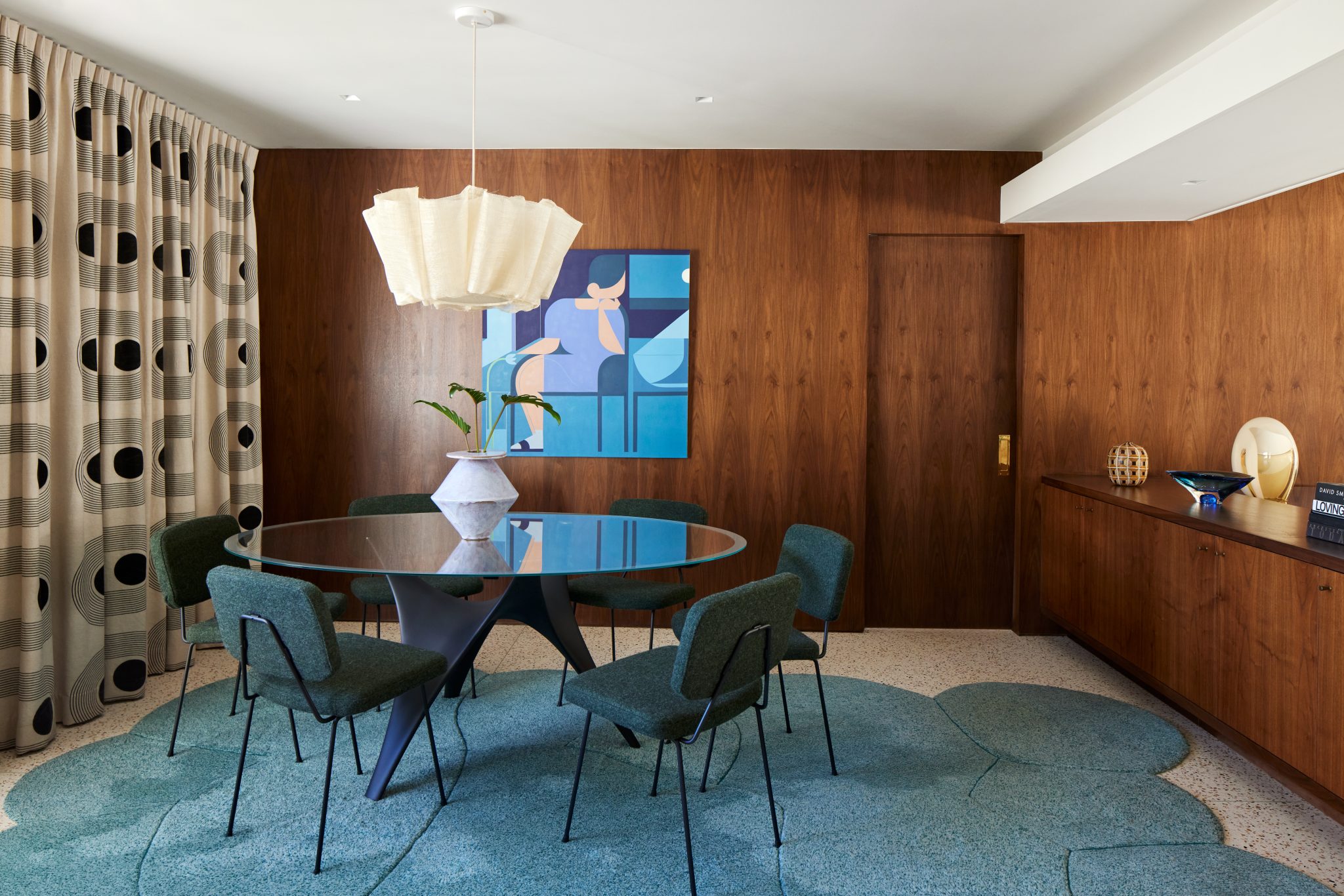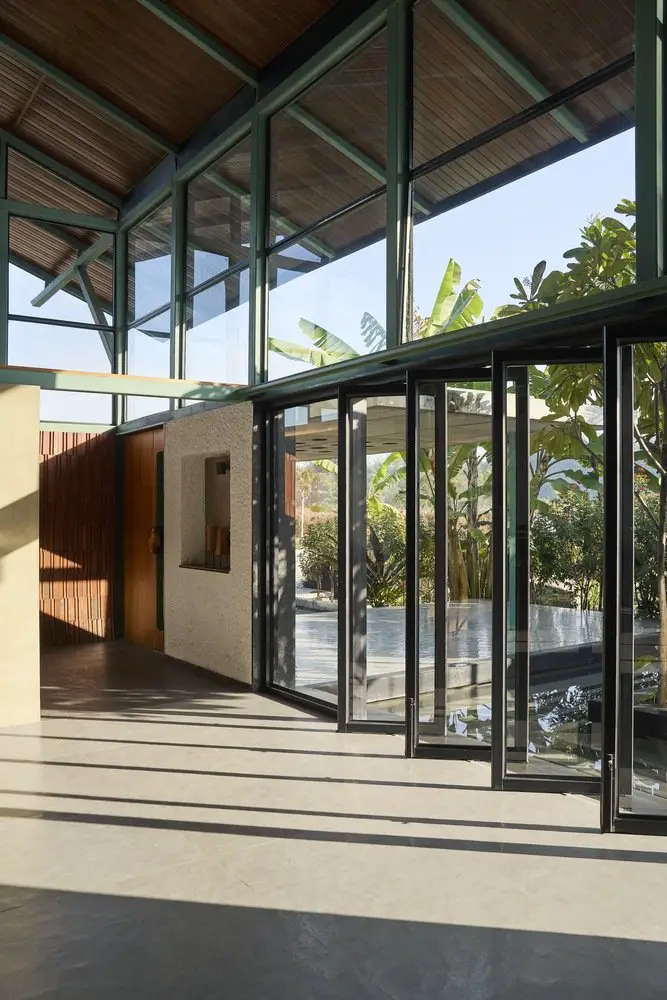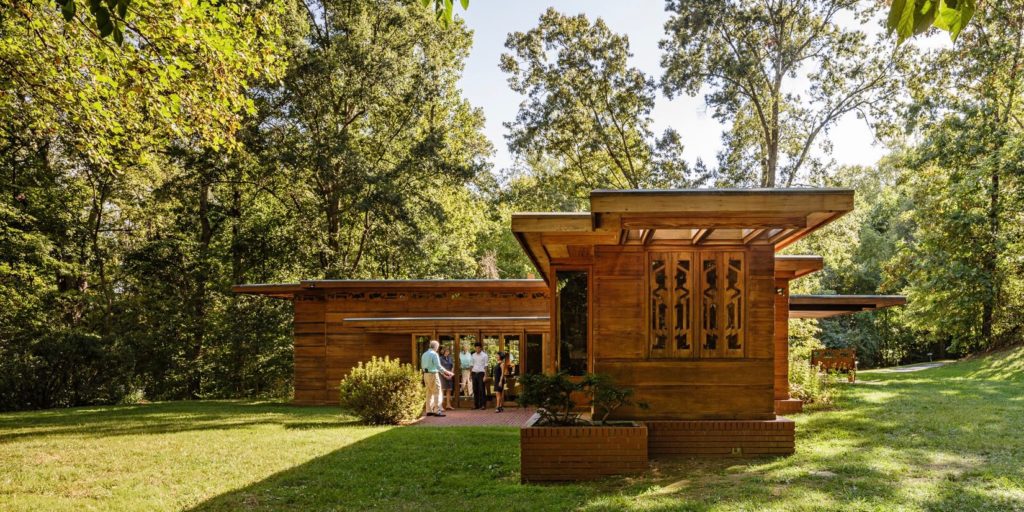
The Frank Lloyd Wright Pope-Leighey House in Mount Vernon, Virginia is a rare and remarkable example of mid-century modern architecture rooted deeply in nature and material authenticity. Designed in 1939 by Frank Lloyd Wright for journalist Loren Pope, and later owned by Robert and Marjorie Leighey, this house is distinguished by its extensive use of warm, polished wood—both inside and out.
Unlike many stark or minimalist modern homes of the era, the Pope-Leighey House emphasizes texture and craftsmanship. Nearly every surface reveals Wright’s love of natural materials. The wood detailing—delicately carved and rhythmically repeated—is perhaps most spectacular in the window frames. These elements turn into glowing lanterns at night, projecting abstract shapes and patterns that make the home feel like a living piece of art.
Among the various Frank Lloyd Wright houses, the Pope-Leighey House stands out for its modest scale. Wright designed the home as part of his “Usonian” series—affordable homes intended for middle-class Americans. The result is a compact layout, but one that still feels spacious thanks to high ceilings, open floor plans, and strong connections between interior and exterior spaces.
One of the most appealing aspects of this mid-century home is Wright’s use of locally sourced materials and built-in furniture. By designing cabinetry, tables, and seating directly into the architecture, he maximised every inch of space, reinforcing his belief that form should always follow function.
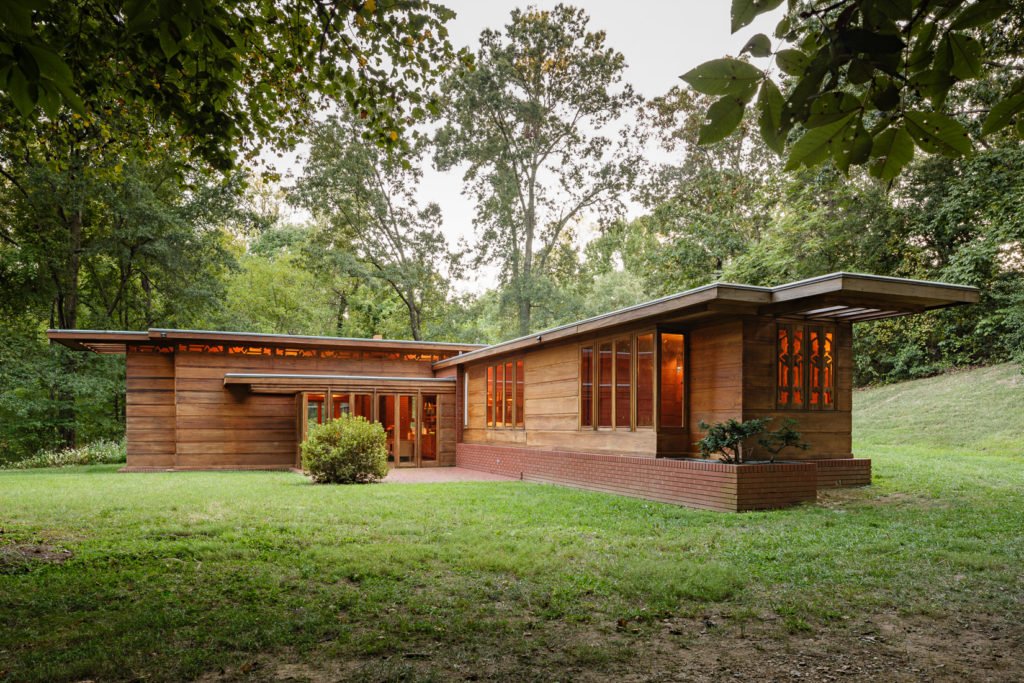
Visitors and architecture lovers often comment on the tranquility and simplicity of the space. It reflects Wright’s ability to combine efficiency with elegance. His vision is evident in every detail—from the layout to the materials, and in the way the house blends with its natural surroundings.
For those exploring mid-century homes or the broader legacy of Frank Lloyd Wright’s architecture, the Pope-Leighey House offers a deeply human experience. It shows that great design isn’t about scale or luxury—it’s about intention, livability, and timeless beauty.
Learn more about Wright’s broader influence in our article on Frank Lloyd Wright’s impact on mid-century architecture, or explore another stunning wooden home in Classic Midcentury Mastery.
This National Historic Landmark continues to inspire generations of designers and homeowners. As part of the National Trust for Historic Preservation, the Pope-Leighey House remains a testament to Wright’s enduring philosophy: that homes should be beautiful, functional, and deeply connected to the land on which they stand.

